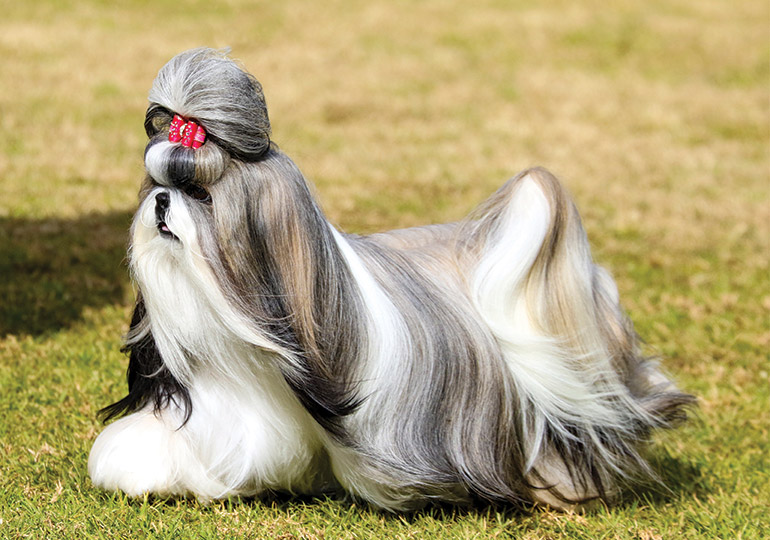Breeds
Shih Tzu

Group 7 - NON SPORTING
History
The Shih Tzu, thought to have originated in Tibet, was once considered a precious gift for Chinese royalty. During the Manchu Dynasty, the breed became very popular with Empress Tzu Hsi, the last Empress of China. The palace eunuchs trained the dogs to perform various tricks, and certain colours and markings were highly prized. With the death of the Empress Tzu Hsi in 1908, the dogs were sold by the palace eunuchs, or given as gifts to important foreign visitors. During this time there was indiscriminate breeding, which saw breeds being mixed within the palace.
Championship status was granted in 1940, with Eng. Ch. Ta Shi of Taishan becoming the first champion of the breed in 1949.
In 1952, Miss Elfreda Evans, a respected Pekingese breeder, introduced a Pekingese cross into British stock. This was done under Kennel Club control to improve various points in the breed, however, many did not agree with her actions.
The Shih Tzu arrived in Australia in 1954 when Tony and Soo Dobson brought their three Shih Tzus and established Wawnehill Kennels in NSW. The breed increased in popularity, and with the addition of further imports, the breed became firmly established with specimens of good type.
Temperament
Overall the Shih Tzu is a very active dog that is extremely intelligent and alert. While it is always friendly, the Shih Tzu may display an arrogant attitude towards visitors or bark when strangers arrive. It is easily trained and poor temperaments are rare.
Appearance
The Shih Tzu comes in a wide variety of colours and can be either parti-coloured or solid. It is an abundantly coated, sturdy dog with an arrogant carriage. In puppies, the face can be likened to a chrysanthemum. Its movement is smooth flowing with good reach in front and strong rear action displaying full pad. It does not bounce or roll.
The head is large and round, with good width of muzzle. The nose is level or tip tilted and approximately one inch in length. The Shih Tzu is rectangular in shape, with adequate length of neck to carry the head proudly. It must have a high-set 'teapot' tail: the tail should never be flat on the back.
Maintenance
The Shih Tzu requires regular grooming, show dogs must be constantly groomed. Faces must be kept clean, particularly around the eyes and mouth. While coat textures vary in the breed, the Shih Tzu's coat has the tendency to matt overnight so it must be kept clean and free from tangles.
Health
Responsible breeders have eliminated many problems within the breed, so many health issues relate to the general care of dogs. Eyes, ears and teeth must be kept clean, otherwise you may have problems requiring veterinary attention.
Both umbilical and inguinal hernias are no longer a major problem in the breed, but they do exist. Luxating patellas and hip dysplasia have been found in the breed. Responsible breeders have eliminated those breeding lines.
Suitability
The Shih Tzu is an ideal pet; it has a fabulous temperament and is suited to all ages.
Daily exercise is not essential as it can be exercised through a simple game of fetch. It enjoys a walk or just running in a fenced yard. It is a long-lived breed with 15 years being the average, but with loving care many will exceed this.
Words: John Sheppard on behalf of the Shih Tzu Club of NSW
Image by Ffire Photography
In Conclusion
Now you know a little about the Shih Tzu you may think that this is the dog for you. Before you make a decision, please make contact with the breed club or your State controlling body for purebred dogs. They will be able to give you information about available puppies and also suggest dog shows where you can see the breed and speak to breeders. In this way you will gain a better perspective of the Shih Tzu and its needs, and whether this breed would suit your lifestyle.
Breeders






